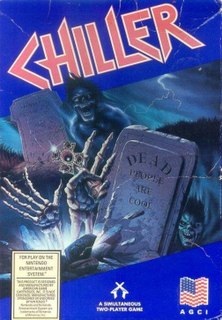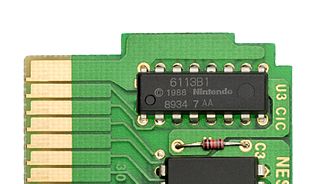
The Doctor V64 is a development and backup device made by Bung Enterprises Ltd that is used in conjunction with the Nintendo 64. The Doctor V64 also had the ability to play Video CDs, audio CDs and had an option for applying stereo 3D effects to the audio.

The Super Nintendo Entertainment System (SNES), commonly shortened to Super NES or Super Nintendo, is a 16-bit home video game console developed by Nintendo that was released in 1990 in Japan and South Korea, 1991 in North America, 1992 in Europe and Oceania, and 1993 in South America. In Japan, it is called the Super Famicom (SFC). In South Korea, it is called the Super Comboy and was distributed by Hyundai Electronics. The system was released in Brazil on August 30, 1993, by Playtronic. Although each version is essentially the same, several forms of regional lockout prevent cartridges for one version from being used in other versions.

A video game console is an electronic device that outputs a video signal or image to display a video game that can be played with a game controller. These may be home consoles which are generally placed in a permanent location connected to a television or other display device and controlled with a separate game controller, or handheld consoles that include their own display unit and controller functions built into the unit and can be played anywhere. Hybrid consoles combine elements of both home and handheld consoles.
The video game crash of 1983 was a large-scale recession in the video game industry that occurred from 1983 to 1985, primarily in the United States. The crash was attributed to several factors, including market saturation in the number of game consoles and available games, many of which were of poor quality, as well as waning interest in console games in favor of personal computers. Home video game revenues peaked at around $3.2 billion in 1983, then fell to around $100 million by 1985. The crash abruptly ended what is retrospectively considered the second generation of console video gaming in North America. To a lesser extent, the arcade game market also weakened as the golden age of arcade video games came to an end.
A regional lockout is a class of digital rights management preventing the use of a certain product or service, such as multimedia or a hardware device, outside a certain region or territory. A regional lockout may be enforced through physical means, through technological means such as detecting the user's IP address or using an identifying code, or through unintentional means introduced by devices only supporting certain regional technologies.
In a general sense, a lockout chip is a chip within an electronic device to prevent other manufacturers from using a company's device to perform certain functions.

Wisdom Tree, Inc. is an American developer of Christian video games. Originally founded in 1988 as Color Dreams, one of the first companies to work around Nintendo's lockout chip technology for the Nintendo Entertainment System, the company changed its focus to Christian games in 1990, changing its name to Wisdom Tree the following year.
A famiclone is a colloquial name given to any clone console of the Nintendo Entertainment System (NES), known in Japan as the Family Computer or Famicom. They are electronic hardware devices designed to replicate the workings of, and play games designed for, the NES and Famicom. Hundreds of unauthorized clones and unlicensed copies have been made available since the height of the NES popularity in the late 1980s. The technology employed in such clones has evolved over the years: while the earliest clones feature a printed circuit board containing custom or third party integrated circuits (ICs), more recent (post-1996) clones utilize single chip designs, with a custom ASIC which simulates the functionality of the original hardware, and often includes one or more on-board games. Most devices originate in China and Taiwan, and less commonly South Korea.
Camerica was a Canadian video game company founded in 1987. It is most notable for releasing various unlicensed video games and accessories for the Nintendo Entertainment System, such as the Game Genie.
Tengen Inc. was an American video game publisher and developer that was created by the arcade game manufacturer Atari Games for publishing computer and console games. It had a Japanese subsidiary named Tengen Ltd..

Chiller is a light gun arcade game released in 1986 by Exidy. An unlicensed port was released for the Nintendo Entertainment System in 1990 by American Game Cartridges in the US, and in Australia by HES, with the option of using either the standard controller or the NES Zapper.
Thin Chen Enterprise, also known as Sachen, was a Taiwanese company that developed several original games for the NES, Mega Drive, Game Boy and other early cartridge-based handheld systems such as the Watara Supervision and Mega Duck. With the exception of the latter two handhelds, all of Thin Chen's games were produced without license from the console manufacturers. The company produced at least 70 unique games for the NES and Famicom and at least 32 for the Game Boy, making it the most prolific unlicensed developer and publisher for both consoles. The company also produced its own Nintendo Entertainment System hardware clones, such as the Q-Boy.

Home Entertainment Suppliers Pty. Ltd. is an Australian company that distributes computer games and gaming equipment. HES' offices are based in Riverwood, Sydney. HES's founder and managing director is MR Sebastian Giompaolo.

Indiana Jones and the Temple of Doom is an action game released in 1988 for the Nintendo Entertainment System. The game is based on the arcade game and film of the same name. The resulting product differed from the arcade version in several aspects, but kept the same underlying premise and style.

The Nintendo Entertainment System (NES) is an 8-bit third-generation home video game console produced by Nintendo. It was first released as the Family Computer (FC), commonly known as the Famicom, in 1983 in Japan. The NES, a redesigned version, was released in American test markets in October 1985, before becoming widely available in the rest of North America and other countries.

The Checking Integrated Circuit, or CIC, is a lockout chip designed for the Nintendo Entertainment System which had three main purposes:

Nintendo 64 Game Pak is the brand name of the consumer ROM cartridge product that stores game data for the Nintendo 64, released in 1996. As with Nintendo's previous consoles, the Game Pak's design tradeoffs were intended to achieve maximal system speed and minimal base console cost—with lesser storage space and a higher unit cost per game. Integrating a CD-ROM drive, with its expensive and slow moving parts, would have drastically increased the console's base price by 50% and reduced its performance.

The Nintendo Entertainment System Game Pak is the software storage medium for the Nintendo Entertainment System.










